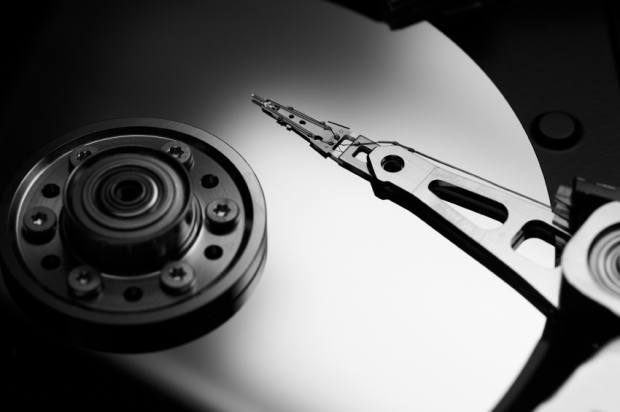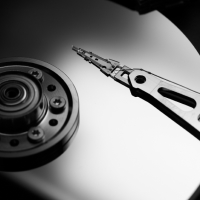It may seem like a difficult chore to move your system and all your files from one hard to a newer, larger hard drive. There are tools available that can take much of the work of moving to a larger hard drive out of your hands.
Below are instructions, provided by Dave Baxter, that explain how he moved from an 80GB hard drive to a 250GB hard drive on Windows 7 Home Premium 32 bit.

Cloning the Drive
- Perform a backup of any critical, important, valuable, inconvenient to loose data. Verify the backup is good, so if it all goes bad, you can get your data back.
- Run Memtest86 from a live boot CD or USB stick. If that finds problems, fix and retest the base PC system before moving on.
- Run Spinrite on the existing drive, if problems are found, let it sort them out. (This may take some time!)
- Run Spinrite on the NEW drive too, perhaps in a second machine if available. Then, you know the new drive is 100% good and fit to use.
- Run a Clonezilla live CD, in conjunction with an external connected storage volume to store the hard drive image. That drive/system should be known 100% good too! Also, with enough free space to store the drive image. Clonezilla does some data compression, but there should be space for at least 75% of the size of the original hard drive. If there are lots of large high res’ pictures, or large ZIP/RAR files etc, you may want enough free space for the entire drive, + some to be safe.
- Use “Drive to Image” mode, to make an “image” of the entire original drive. Verify the image can be restored. If it fails, re-make the image etc, until a good verify is obtained. A lot of time is needed, as there is a lot of data to squeeze down that USB or LAN cable to the external storage device.
- Swap the physical drives. Out with the old. In with the new! (Don’t chuck the old drive yet!)
- If the new drive has not been Spinrite’d, do that now, a “Level 2” test at least, ideally a “Level 4” test should be done. Either way, it can take time, maybe perform that overnight?
- Boot the Clonezilla live CD again, and use it to restore the image of the original drive, to the new drive.
- Shutdown Clonezilla, remove the CD/USB device, and reboot the system from the new drive. It SHOULD come up exactly as before. But, if it wants to, let it do any file system checks it wants, to complete the boot, also let it search and load any needed drivers for the new drive once Windows is back up.
- Check the status of the drive volume, and it should report the same size as the original drive (after all, the partition etc will be the same.)
- Two options now. You can either make a new partition in the new free space, and assign that to a new logical drive. All that can be done within Windows Disk Management dialog, find it via Control Panel, and “Computer administration”.
Note:
Some laptops wont complete the test, unless you can find a way to provide extra cooling, or turn off any ACPI watchdog in the BIOS, if such a feature exists.
If that’s all you need, job done. Enjoy the new empty space, probably by moving music, photos, documents, etc. from the original location to the new volume.
Allowing the System Drive to Grow
If you want the main system drive (usually C:) to grow in size…Windows won’t let you do that, as you’ll be trying to alter the “live” partition its running in!
- So, boot a Gparted live CD.
- Use that to extend the end of the main partition to fill the unallocated space on the new drive. Do that by dragging the right hand side of the partition representation, as far to the right as you can.
- On my system, there was no small recovery partition above the main one, but if so, you may be able to move that to the end of the free space, then extend the main partition into the free space before it. But, if that partition contains boot code, it may make the system unbootable. In that case, re-restore the image, and just make a new logical drive in the new free space, using Windows own tools.
- DO NOT UNDER ANY CIRCUMSTANCES ALTER ANYTHING AT THE LEFT SIDE, such as removing/altering any other partition, or trying to use any empty space there! DO NOT alter the partition start position on the drive, as the system WILL become unbootable.
- Let Gparted apply the changes, and do any file system checks & fixes it deems necessary.
- Shutdown the Gparted system, remove the CD/USB stick, and reboot the system from the new hard drive.
Let it run Chkdisk etc, as it’s just found a truck-load of new space, and thinks that there is a file system problem. LET IT DO ITS CHECKS! It can take a little while. It will reboot itself when done.
You should now have a C: drive that is more than voluminous for you.
Enjoy.
Tips for After the Cloning
Keep the original drive safe for a few weeks, just in case something bad happens to the new drive early in it’s life.
Consider an external drive for backups (USB drive, or NAS device.), or perform periodic “Offline” backups of the entire drive (perhaps with Clonezilla), or consider one of the “Online” automated cloud storage based backup services.
The Software
Clonezilla and Gparted Live are free Linux based software tools, easily findable via Google searches etc. If possible ONLY download the ISO’s from their respective projects SourceForge or GitHub sites. Or other known and trusted source. You will need to be able to create either bootable CD’s or USB sticks from the ISO’s.
Spinrite is not free! But for what it costs (some $80) it is well worth having your own copy, especially if you do this sort of thing for family and friends etc. If you do it for “income”, you should purchase a site license.
Clonezilla has been known to stall/fail, if there are media read errors on the original drive, or when restoring the image back to the new drive, if that has problems.
